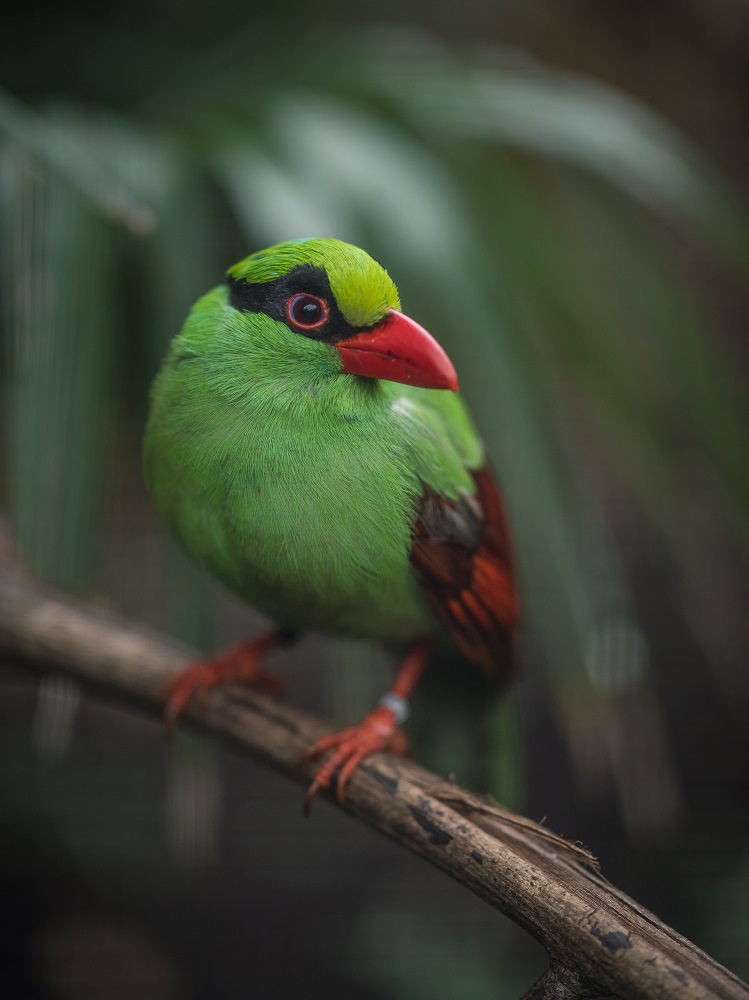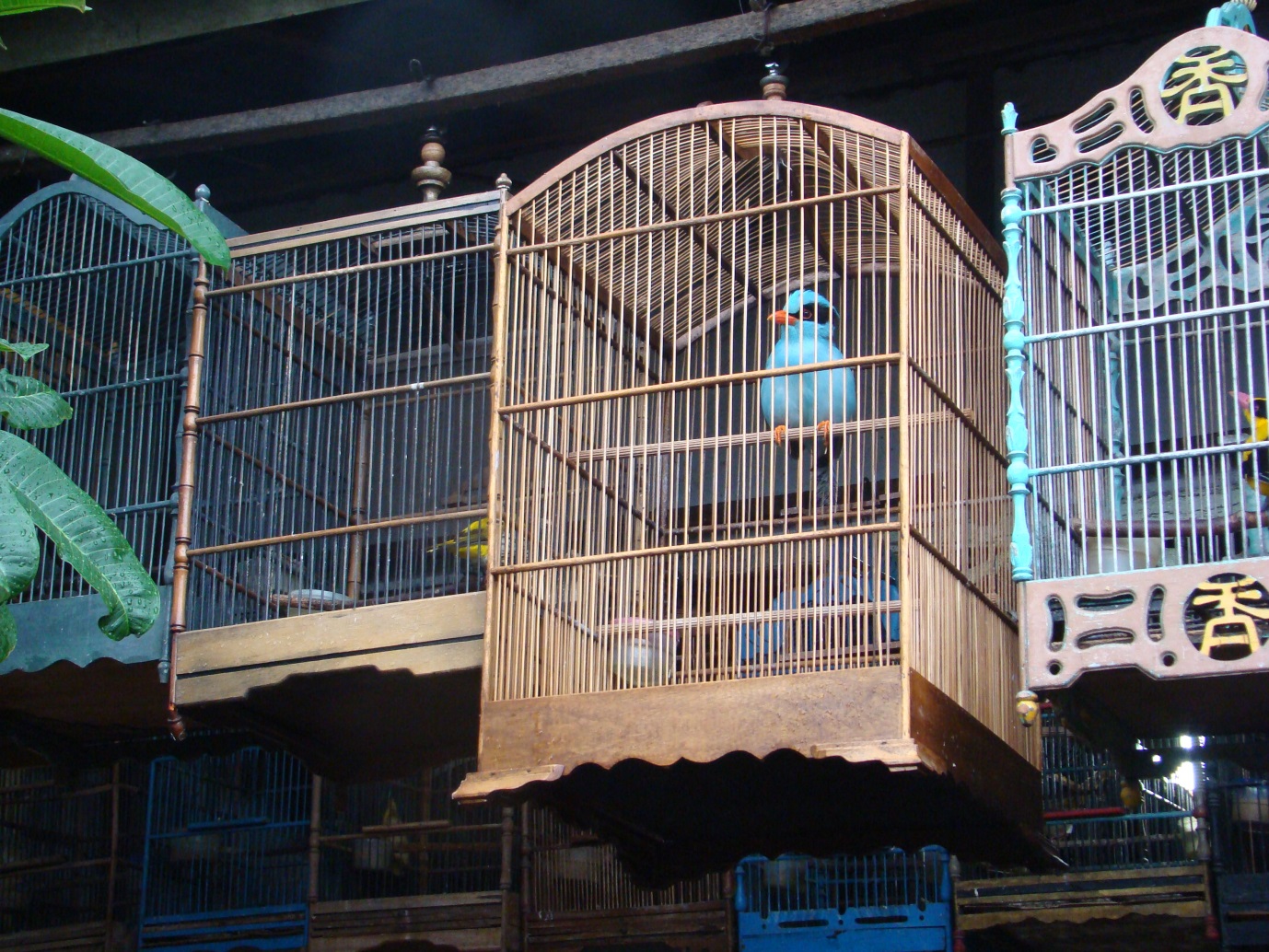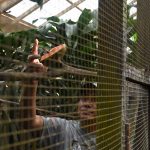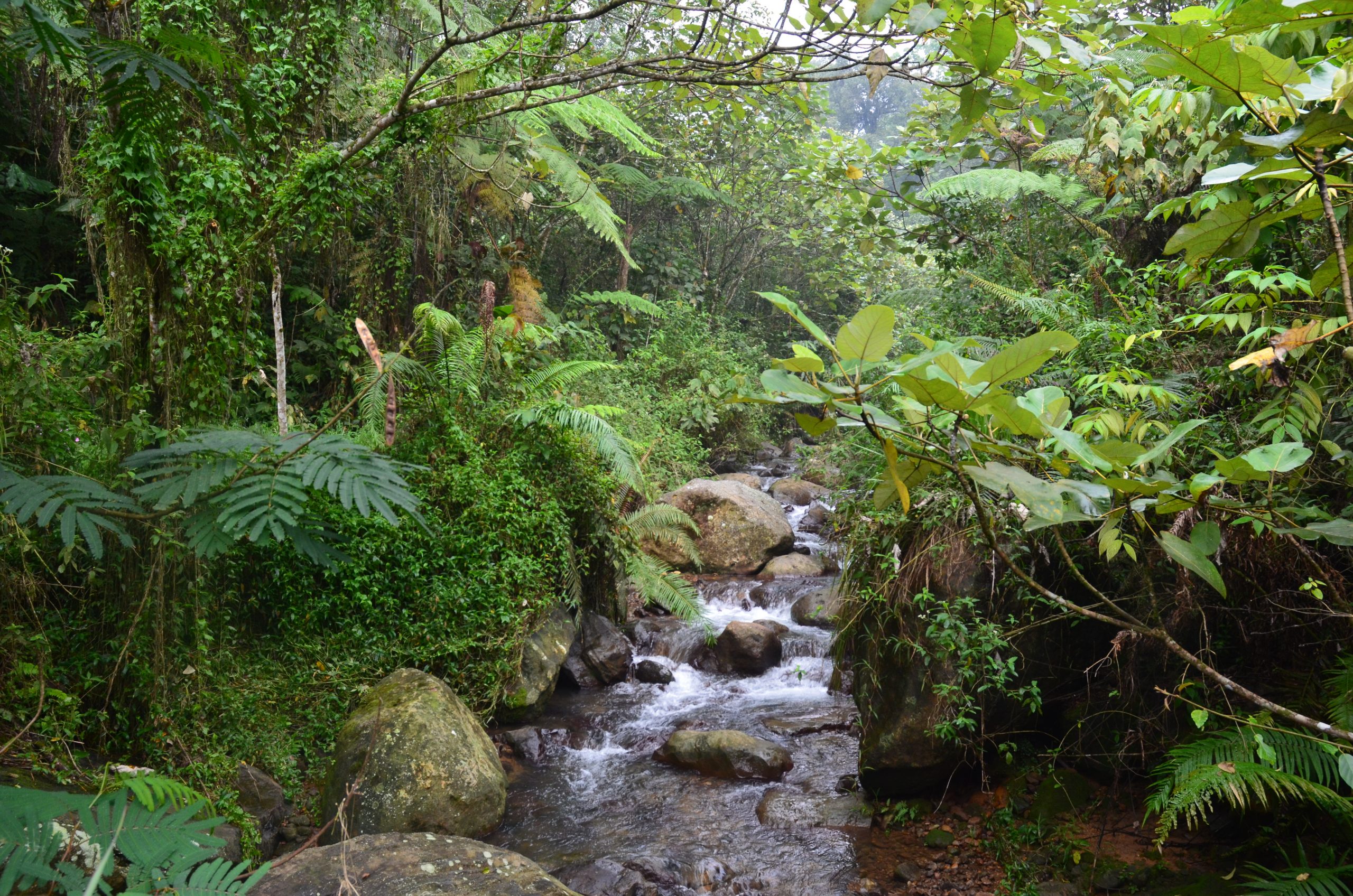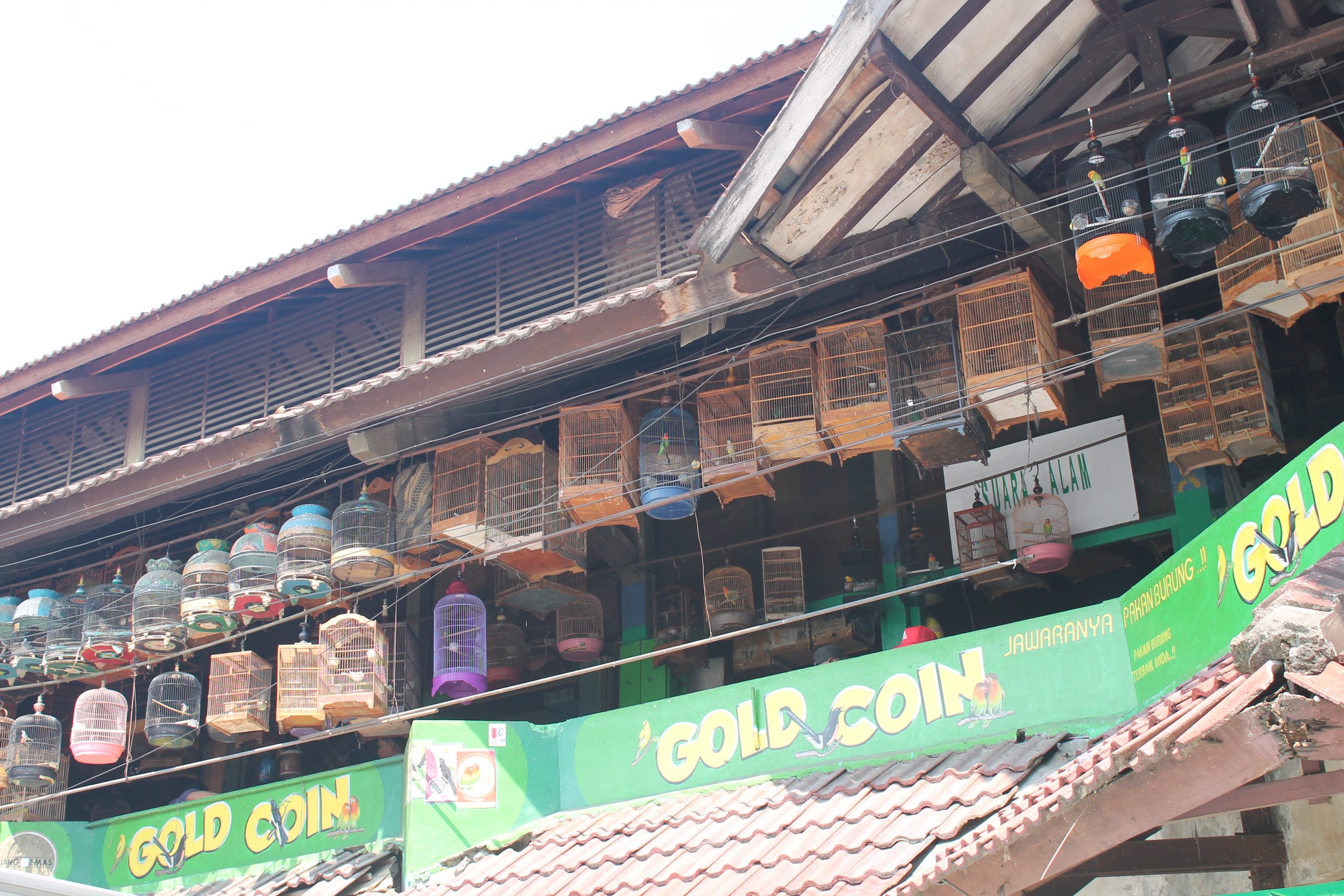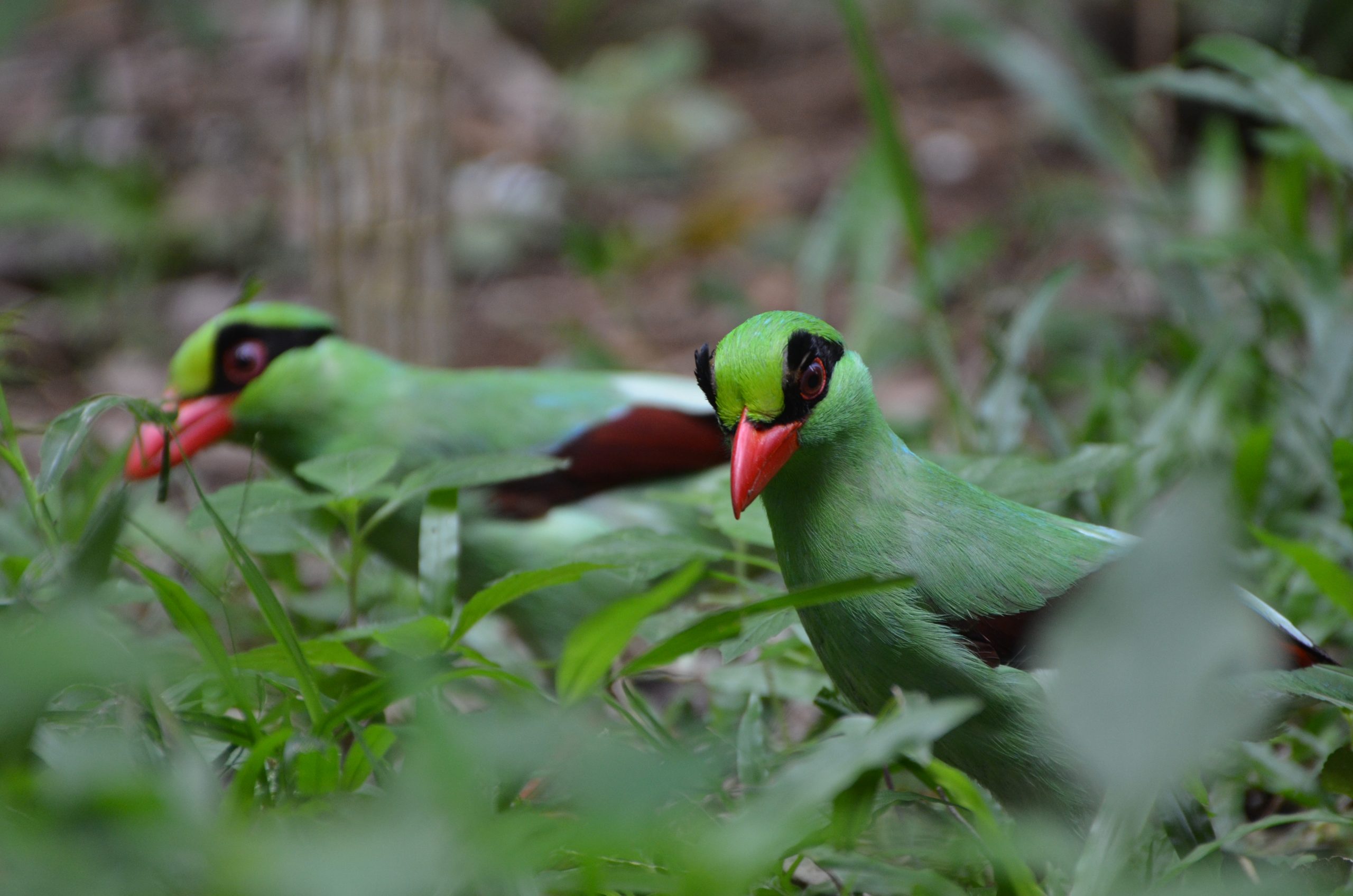Partners and collaborators
The Javan green magpie is one of the most sought after songbirds in the world…
Java, Indonesia, is the species’ home. Here you can find the largest market for the trade of songbirds on Earth. It’s a trade of great complexity, in part rooted deeply in centuries of Indonesian tradition, and also driven by modern demand for the rarest species around.
Javan green magpie are particularly sought out for multiple reasons. They have a striking appearance – bright apple green feathers along the full length of the body, contrasting brown wings, a bright red beak and legs, and their charismatic black “bandit’s mask” (a layer of glossy black feathers surrounding the eye).
Their extraordinary vocal range also makes them desirable in the lucrative industry of birdsong contests – not as an entry bird itself, but rather as a bird used to ‘train’ contest species with unusual calls. On top of the demand for magpie poaching in the wild, add significant loss of Java’s submontane and montane forest that the species prefers as habitat, and you have a real difficult situation on your hands.
Despite this, there’s much we can still do to prevent the extinction of the Javan green magpie, but it is important to iterate just how on the brink they stand currently as a species considered Critically Endangered by the IUCN.
In the last 21 years of study of the Javan green magpie, the species has only been sighted within four individual protected areas on Java. Four protected populations sounds comforting… however, the last confirmed observation of the bird by scientists was in 2014, that’s eight years ago. Even then, this record was only the detection of their calls, rather than a visual sighting.
While they’ve been lost to science in this period, they are still out there, in small numbers. We know this because wild birds continue to turn up in the bird trade – on rare occasion in physical markets, but by far more commonly on the web trade.
We must find and protect the very last Javan green magpies out there; it’s likely no more than a couple of hundred remain now. This protection is what the Javan green magpie project aims to achieve, funded by the EAZA Silent Forest Programme.
Partnership
The Javan green magpie project is an extension of an international partnership on songbird conservation dating back more than a decade. We’ve been proud to be a core part of this partnership, alongside Manchester Metropolitan University (MMU) in the UK, and the Cikananga Conservation Breeding Centre (CCBC) in Java.
Since 2011, CCBC has formed the basis of an ex-situ (outside of the wild) breeding programme of Javan green magpie and numerous other threatened birds. Here at Chester Zoo we also care for the species and manage it as part of the European breeding programme.
Meanwhile, a team based at MMU under the leadership of Prof Stuart Marsden has been collaborating with Indonesian research institutes to better understand the drivers of the songbird trade and how it functions. Two Chester Zoo conservation scholars – Dr Harry Marshall and Dr Tom Squires – have achieved their PhDs while working towards this cause.
The challenge now is to combine the multidisciplinary skills of our various institutions, from wildlife monitoring to social science, in finding the Javan green magpie and halting the causes of its decline where it persists, and protecting safe havens where birds bred under our care may one day be released.
Photos from left to right – Former Conservation Scholar Tom Squires, Former Conservation Scholar Harry Marshall, Inside an aviary at Cikananga, Cikananga viewed from the air.
Phase ONE
The initial phase of the Javan green magpie project began at the very end of 2021 and will span 18 months.
Two specific targeted surveys have begun in attempt to find the species in two areas of its former known range, areas where there’s evidence to suggest that trapping activities are taking place still today. A discovery in either location would mean knowing the whereabouts of what could well be the last surviving wild Javan green magpie population.
Even if the surveys return empty-handed, identifying prime Javan green magpie habitat that has simply been poached out – known as “silent forests” – would mean we can begin the work to set up for potential reintroductions in future.
Ex-situ populations in zoos and breeding centres around the world together have safeguarded the bird from total extinction, even if it’s already rapidly disappearing from the wild. To return it to the wild down the line would mean addressing the root causes of decline first, however.
Phase one will also see the team engage with communities and trappers who are known to trade in the Javan green magpie, to understand their processes and, crucially, how the trade affects their livelihood. If people are reliant on the trade of wild animals to avoid slipping into poverty then banning said trade without livelihood support only succeeds in driving the trade further underground and into the black markets where regulation is near impossible.
The project is in the process of gathering socio-economic information to lay the groundwork for potential alternative livelihood programmes in the years ahead, as well as investigating the feasibility of a Javan green magpie ‘pride campaign’. Such a campaign would aim to cement the bird as the flagship of the communities who live closest to its remaining habitat.
Future
There’s much research to be done on the Javan green magpie project’s long road ahead, much of which will rely in forging strong bonds with the people at the centre of the songbird trade. It’s critical that we do not see trappers and traders as the enemy of conservation, but rather the answer to the decline of wild songbirds. Their knowledge of the species in the wild will likely be a key component to understanding and protecting it in the years ahead.
Finding what’s left of the wild populations, protecting remaining habitat, and addressing the root causes of habitat loss and the songbird trade together may well mean that in the decades ahead the return of unique birdsong to Java’s silent forests may become reality.


